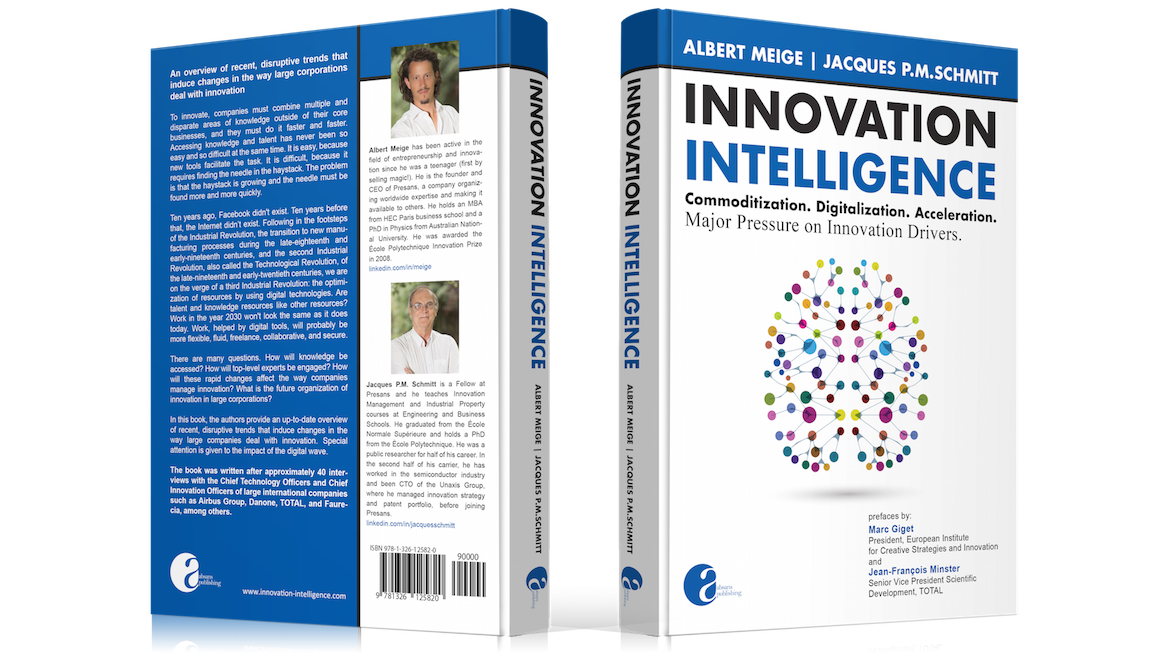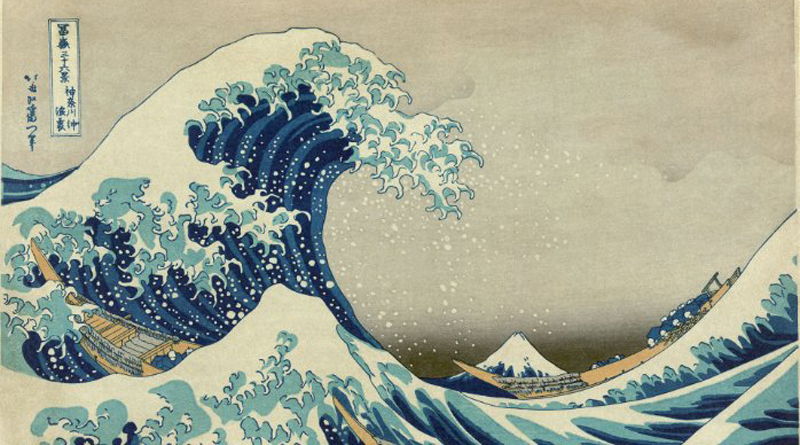In our book Innovation Intelligence, we give an overview of recent, disruptive trends that induce changes in the way large corporations deal with open innovation. The book was written after approximately 40 interviews with the Chief Technology Officers and Chief Innovation Officers of large international companies such as Airbus Group, Danone, TOTAL, and Faurecia, among others.
We are very pleased to have two prestigious preface authors:
- Marc Giget, President, European Institute for Creative Strategies and Innovation
- Jean-François Minster, Senior Vice President Scientific Development, Total
The book is 318 page long and is composed of 7 chapters (in addition of the introduction and of the conclusion):
- Chapter 1: The Internet of Skills & Knowledge
- Chapter 2: The Parrot AR.Drone Case
- Chapter 3: Knowledge, the Fuel of Innovation
- Chapter 4: Commoditization of Knowledge & Technologies in a Digital World
- Chapter 5: Expert & Expertise
- Chapter 6: Toward Innovation Intelligence?
- Chapter 7: Tools for Innovation Intelligence & Rapid Experimentation
Here is the teaser of Innovation Intelligence

Ten years ago, Facebook didn’t exist. Ten years before that, the Internet didn’t exist. Following in the footsteps of the Industrial Revolution, the transition to new manufacturing processes during the late-eighteenth and early-nineteenth centuries, and the second Industrial Revolution, also called the Technological Revolution, of the late-nineteenth and early-twentieth centuries, we are on the verge of a third Industrial Revolution: the optimization of resources by using digital technologies. Are talent and knowledge resources like other resources? Work in the year 2030 won’t look the same as it does today. Work, helped by digital tools, will probably be more flexible, fluid, freelance, collaborative, and secure.
There are many questions. How will knowledge be accessed? How will top-level experts be engaged? How will these rapid changes affect the way companies manage innovation? What is the future organization of innovation in large corporations?
In this book, the authors provide an up-to-date overview of recent, disruptive trends that induce changes in the way large companies deal with innovation. Special attention is given to the impact of the digital wave.
***
More information can be found on www.innovation-intelligence.com. On the website, we provide summaries of the chapters, and later on, some samples.




Trackbacks/Pingbacks